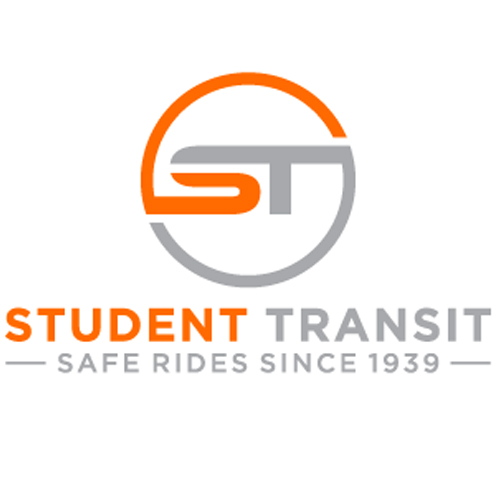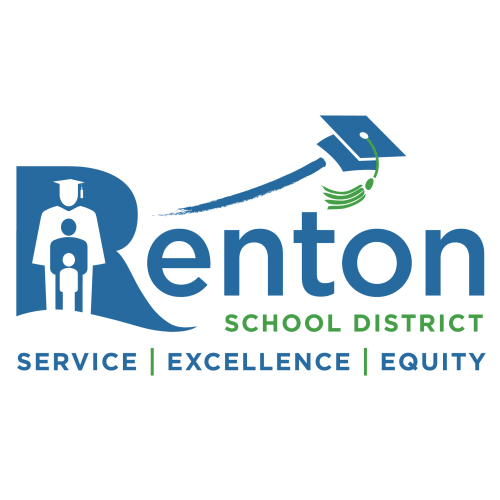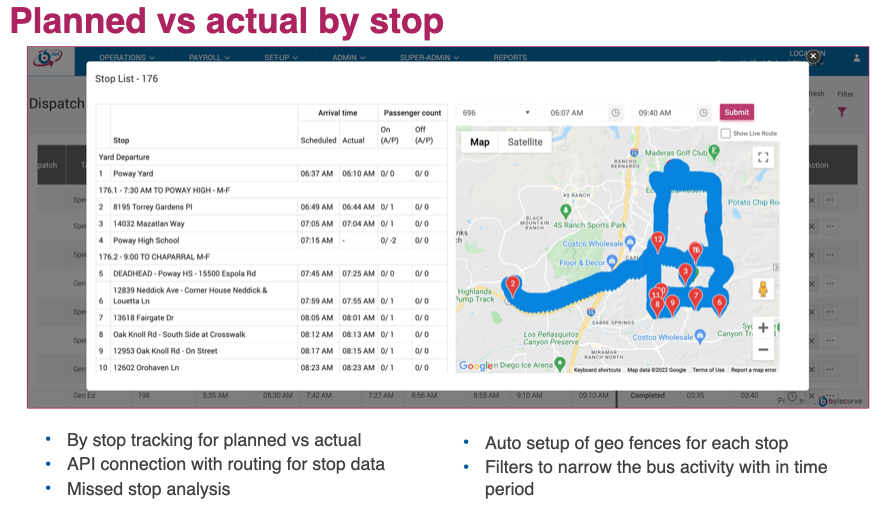2 + 2 = 5
Say goodbye to independent technology silos that don’t communicate or deliver an integrated experience.
And say hello to a comprehensive view of your operations, payroll and communications that transforms your daily operations.
Our School Bus Operating platform arms your team with the information they need to improve decision making around safety, reducing costs, and being more efficient each day.
Trusted by dozens of public and private student transportation fleets to improve how they do business.

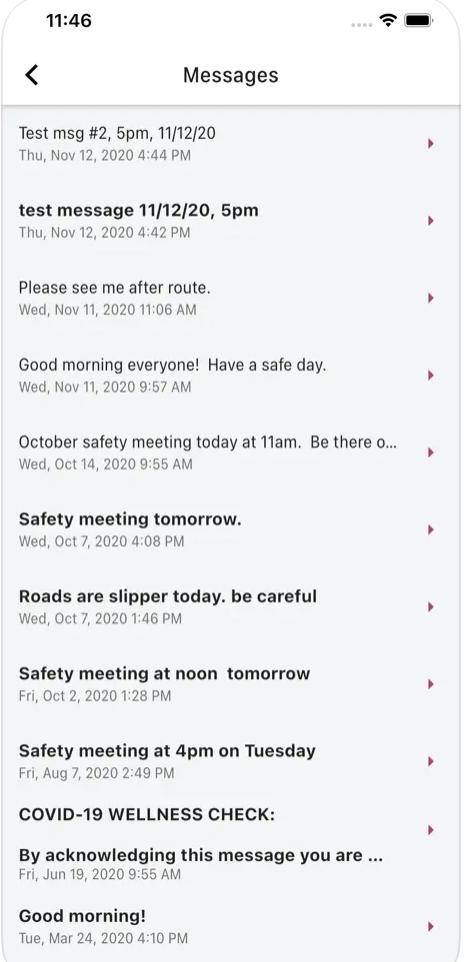
ByteCurve360 enables transportation organizations to improve safety and operational efficiency by merging routing and GPS fleet tracking data into a comprehensive management tool.
Task drivers, reassign routes and verify payroll in seconds.
Better manage late/absent drivers and deliver on-time performance your students depend on.
Trusted by the Finest Names in School Bus Transportation
Many, if not most, larger school districts and private school bus fleets rely on GPS Fleet Tracking today, as well as routing software, to improve their operations and deliver greater student safety.
But many districts are still unaware of a new emerging technology designed to connect the two previously independent platforms into a 360 degree view of operations to empower dispatchers, payroll technicians and fleet directors to capture even better operational efficiencies and uncover new ways to increase safety.
Bytecurve360, developed and supported by a team with more than 100 years of combined student transportation experience, is growing in popularity among fleets who leverage both routing and GPS Fleet tracking thanks to its ability to improve driver management, better control costs associated with payroll and deliver improved services to schools and families.
Not designed to replace either system, Bytecurve360 aims to connect dots that were previously constrained by technology silos into a more comprehensive perspective of student transportation management.

Bytecurve360 delivers a transformative operational experience.
Featuring a driver communication app, a payroll tool that can be leveraged in the garage via desktop or on- the-go via the driver app DriveOn as well as dispatch features designed by a team with years of experience managing complex and dynamic school bus fleets, Bytecurve360 delivers a transformative operational experience.
“It’s helped us provide a new level of command and control that allows us to be ahead of issues instead of responding to them,”
Marty Klukas, General Manager, Student Transit.
Some of the most essential features include:
- Better Driver communications so that employees can check in/out remotely, view their schedules and receive messages on their smartphones.
- Easier payroll management so that you no longer have to manually calculate employee guarantees/contracts and overtime.
- Simpler management of daily operations, including assigning/reassigning drivers and vehicles, using real-time integration with GPS and routing systems. This allows all stops to be easily be rerouted when a bus breaks down or a driver can’t come in.
School Bus Safety: What you need to know
School bus safety technology is an “umbrella” term used to refer to a number of technological systems and applications designed to ensure student safety and security onboard school buses.
This innovation’s primary aim is to prevent accidents, enhance communication and keep track of the overall safety of all students during their transit to and from school.
These kinds of school bus management software tools often leverage GPS technology to keep track of school bus locations in real-time. This way, school administrators and parents can always know the location of the buses, which ensures timely pick-ups and drop-offs.
Some of these apps may also deliver a more streamlined means of keeping track of student attendance on buses. Students get to check in and out via RFID cards or any other unique personal identification numbers. This helps to ensure that no student is ever left behind or misplaced.
School bus safety technology often integrates route optimization algorithms to help plan the most efficient and safest bus routes. In turn, this helps cut down travel time, fuel consumption, and congestion. While at the same time, making sure students are picked up and dropped off at the proper stops.
Many varieties of these applications can carry out school bus scheduling tasks and include features or modules that are designed for the effective management of bus schedules.
These systems may also facilitate efficient communication links between school administrators, bus drivers, and parents. They can even dispatch notifications in regard to delays, route change, emergencies along with other critical updates, which keep everybody informed.
Many school bus safety technology apps come complete with surveillance functionalities including onboard cameras. These systems record the activities within buses, which helps deter misbehavior. It also provides concrete evidence in the event of any incidents or accidents occurring.
Some of them facilitate immediate communication links between the driver and emergency services. Panic buttons and emergency alerts may be activated to notify authorities and request prompt assistance.
Parents may leverage school bus safety technology and its related applications to monitor their children’s bus location. They will as well be able to receive alerts on arrival times and track their children’s safety during the bus journey.
This feature delivers peace of mind for parents and guarantees their involvement in the transportation process.
Bytecurve is the latest in a long history of technologies designed to help school bus fleet operators deliver safe, reliable and on-time service for the country’s largest public transit system.
Tens of millions of students ride the iconic yellow school bus every day, and they rely on technologies like routing, GPS fleet tracking and Bytecurve360, which connects these two systems to deliver a powerful layer of visibility and operational awareness that allows fleet operators to stay ahead of absent drivers and vehicle issue that could disrupt operations.

Bytecurve circle graph 2
What are the standard features of school bus safety technology?
Many of the most popular school bus safety technologies typically come with a variety of standardized features to ensure the safety and security of students while onboard school buses.
Real-time GPS tracking facilitates the consistent monitoring of school buses. This allows school administrators and parents to figure out the exact location of the buses and their estimated time of arrival (ETA). GPS tracking can help police drivers and ensure they’re operating safely, in the appropriate locations and not idling excessively.
Geofencing establishes virtual boundaries around designated areas including the school premises and bus stops. When the buses enter and exit these predefined areas, the system will trigger alerts to the concerned parties. These systems can help fleet managers defend against drivers not serving as responsible stewards of community resources like the school buses and vehicles.
These technologies often deliver school bus attendance management capabilities and allow students to check in and out using a number of personal identification methods. This keeps track of students and ensures their presence on the bus. These systems can also help streamline federal reimbursements for the transportation of disabled or special needs students.
School bus safety technology systems may enable communication between all stakeholders. They can dispatch notifications when it comes to delays, route changes, emergencies, or any other essential information. Bytecurve360 is an industry leader in this category, delivering real-time alerts when drivers aren’t clocking in or departing the yard as required so dispatchers can respond promptly to potential disruptions.
Some of these apps feature onboard cameras that monitor and record the activities that happen within the bus. This functionality is designed to deter misbehavior and offer evidence in the event of any accidents or incidents.
These technologies often have route optimization algorithms to help school administrators and drivers plan the most efficient and safest bus routes. To this end, they take into account factors such as student locations, traffic conditions, and road networks to reduce travel time and distance.
Some systems come complete with the ability to keep track of and report driver behavior including speeding, harsh braking, or even sudden maneuvers. In turn, this helps ensure safe driving practices and the well-being of students. These systems are especially valuable in the shorter buses or transport vans that do not require a special license to operate because coaches, teachers, or substitutes can operate them outside of safe conditions.
The parental monitoring feature lets parents keep track of their children’s bus locations, monitor their safety while onboard, and receive alerts on arrival times. This functionality ensures parental involvement and offers them peace of mind. Parents today rely on these tools as essential and they are no longer viewed as a luxury for the most affluent school districts.
The best school bus safety technology systems out there often collect and analyze data on bus routes, attendance, incidents together with other parameters. This data, in turn, may be leveraged to generate reports and gain insights into improving the overall safety and efficiency of school bus transportation. This data can be used to validate and improve routing as well as supplement school attendance tracking information.
Integrated Student Transportation Software
What needs does school bus safety technology meet?
School bus safety apps deliver real-time GPS tracking, geofencing, and surveillance functionalities that greatly improve the safety of students during their bus rides. These systems provide instant alerts and updates in regard to bus schedules, delays, emergencies together with any other critical information.
These systems facilitate seamless communication capabilities between administrators, bus drivers, and parents. They can dispatch timely notifications and updates in terms of bus schedules, delays, emergencies along with other crucial information.
However, GPS data and routing are often insufficient to meet the demands of a dynamic school bus fleet. That’s where Bytecurve360 enters, connecting the two systems into a central command and control system that delivers a dispatching functionality that can transform operations.
Parental monitoring capabilities enable parents to participate actively in their children’s bus transportation and remain up-to-date about their safety.
School bus safety technology integrates route optimization algorithms to help school administrators plan efficient and safe bus routes. By evaluating factors like student locations, traffic conditions, and road networks, these systems can reduce travel time and distance.
This can in the long run lead to cost savings and improved efficiency. Also, they can be useful in helping manage bus and driver assignments to guarantee optimal resource allocation.
Bytecurve360 also seamlessly integrates payroll that can capture different jobs and pay types, allowing drivers, sub, and mechanics and support staff to clock in/out from either a tablet in the garage or via a mobile app, which also serves as a messaging portal for instant communications between dispatch and drivers in the field.
The attendance management feature of school bus safety technology automates the process of monitoring student attendance on buses. By utilizing diverse personal identification methods, these apps can streamline the check-in and check-out processes, which minimizes errors and encourages student accountability.
Some technologies of this sort can collect and analyze data associated with bus routes, attendance, incidents, and more. This data may be leveraged to generate reports and gather insights into helping school districts determine patterns and optimize operations. They also empower school districts to take informed decisions in the context of improving school bus safety and efficiency.
When contrasted with other alternative solutions including manual tracking, phone calls, or paper-based systems, school bus safety technology offers a more cost-effective approach towards school bus safety. They automate processes, minimize administrative burden and improve overall efficiency. This results in cost savings for school districts over time.
Overall, school bus safety technology delivers a comprehensive and integrated solution that can address the unique needs and preferences of school districts when it comes to safety, efficiency, communication and data management.
These systems deliver a more effective solution upon comparison with most other traditional techniques. This contributes to a safer and more secure transportation experience for the students.
Today, nearly all of these solutions are cloud-based, meaning they won’t require any upfront investment in servers or other expensive hardware and most are available on a per-month, pay-as-you-go pricing model, meaning there is very little initial cost as districts onboard and deploy these technologies. In most cases, the savings in efficiency of the fleet and decreased labor – not to mention stress – from fleet managers can cover most of the cost of the technology investment.
Let’s now take a look at some of the most notable pros and cons of using school bus safety technology for all stakeholders.
School administrators pros
- Improved safety and security for students on board school buses.
- Improved communication and real-time updates on bus schedules, delays, and emergencies.
- Streamlined attendance management, which reduces errors and improves accountability.
- Data analysis and insights to optimize bus routes, resource allocation, and decision-making.
- Cost savings through efficient operations and reduced administration workload.
School administrators’ considerations
- Staff and drivers will require additional training to use the technology effectively.
- There will be a need for maintaining and updating the technology on a regular basis.
- There might be privacy concerns over data collection and surveillance.
School bus drivers’ pros
- Real-time GPS tracking and route optimization ensure efficient navigation.
- Improved communication capabilities with school staff and parents.
- Huge assistance in student attendance management.
- Enhanced security thanks to panic buttons and emergency alert systems.
- Access to valuable information and updates on student safety.
School bus drivers’ considerations
- Learning curve in assimilating and adapting to new technology.
- Increased responsibility in the management of app usage and updates.
- Additional training might be necessary to effectively handle emergency situations.
Parents/guardians’ pros
- Real-time tracking of their children’s bus locations and estimated time of arrival.
- Timely alerts on delays, bus schedule changes, or emergencies.
- Improved peace of mind and reassurance about their children’s safety while in transit.
- Access to attendance records and reports.
- Increased involvement and communication with school transportation services.
Parents/guardians’ considerations
- Reliance on accurate and up-to-date information from the system.
- Potential challenges in understanding and navigating the app features.
Students pros
- Increased safety and security onboard school buses.
- Efficient and organized boarding and disembarking process.
- Enhanced communication in the event of emergencies or bus schedule changes.
- Reduced probability of being left behind or misplaced.
- Potential deterrent effect on misbehavior thanks to onboard surveillance.
Students considerations
- Need to adapt to new procedures for attendance management.
It is important to mention that the exact pros and cons tend to vary based on the specific features and implementation of technology.
Not to mention the customization of school bus safety technology within each school district.
What to look for in school bus safety technology
Always select technology that prioritizes the privacy and security of student data. And consider security of the software as well as schools are increasingly the target of sophisticated ransomware and other malicious cyber attacks.
It is essential to make sure the vendor you ultimately choose follows industry-standard data protection practices, encryption protocols and delivers robust security measures that safeguard sensitive information.
Consider tools that enable customization to align seamlessly with your unique needs and requirements. The ability to configure the app based on your district’s policies, preferences, and privacy regulations will help mitigate concerns and guarantee a smooth adoption process.
Always assess the usability and intuitiveness of the system’s user interface.
It ought to be easy for school staff, drivers, and parents to navigate and utilize the various features effectively. Additionally, evaluate the availability of in-depth training and ongoing support from the vendor.
Make sure that the technology provider is transparent about how data is collected, stored, and used. Be on the lookout for clear consent mechanisms for data collection to ensure the vendor sticks to all relevant privacy regulations and guidelines.
Verify that the school bus safety technology you eventually pick complies with local laws, regulations, and industry standards including data protection laws and student privacy requirements. This will help mitigate potential legal and compliance risks.
Evaluate whether or not the technology can scale to seamlessly suit the changing needs of your school district. Also, evaluate the software’s compatibility and integration capabilities with existing systems and IT infrastructure.
Lastly, consider piloting the school bus safety technology with a smaller group of users or on a limited timeframe prior to implementing it district-wide. This will enable you to gather feedback, address any issues that crop up, and make the necessary adjustments or refinements.
Finally, make sure any technology you select has APIs that make it easy to communicate with other systems, like Bytecurve360. That last thing you need is many different systems acting in silos that aren’t able to share information aimed at making your fleet operator safer and more efficient.
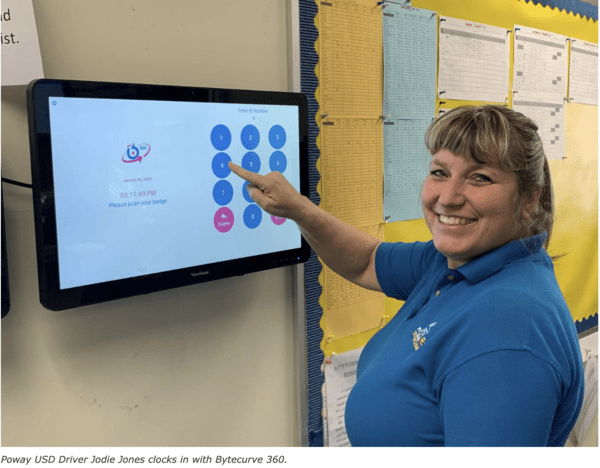
If you are in the market for a school bus driver scheduling software, here’s what to look out for
- The application should feature a user-friendly design to enable administrators, drivers, and parents to understand and navigate the system. It should be cloud-based and be supported by U.S.-based support team who appreciate the unique demanding environment of a school bus fleet.
- The platform should include ongoing and comprehensive training and support for all users to guarantee they’re comfortable with the tool and can use it effectively. Bytecurve features ongoing support from our team of school bus operations experts.
- The school bus driver scheduling software platform you eventually select should commit to continuous updates and maintenance to ensure it remains current and devoid of bugs or glitches. Bytecurve is founded by innovators who will never stop improving the platform based on the needs and wants of their customers and school bus fleet operators.
- The app should be flexible and customizable to tailor it to the unique needs of each school or district. Bytecurve will work with each district or contract to build their tailored solution that meets their unique requirements.
- The software should be capable of integrating with other related tools like student information systems to guarantee accurate and up-to-date data is being used to create and manage driver schedules. Bytecurve has integrations with all of the major routing and GPS fleet tracking solutions so that virtually any school bus fleet can enjoy the benefits of the transformative technology.
Conclusion
School bus scheduling software like Bytecurve have significantly transformed the management of school bus transportation operations.
With their powerful features including route planning and real-time GPS tracking integrations, automated scheduling, and efficient communication capabilities, these systems address the critical needs of school districts including student safety, operational efficiency, parental satisfaction, and compliance.
One of the primary benefits of these apps is their ability to streamline route planning and optimization.
With sophisticated algorithms, these tools take into consideration diverse variables such as student locations, traffic conditions, and time constraints to create the most efficient school bus routes.
This not only minimizes travel time and fuel consumption, but maximizes the utilization of resources including the drivers and buses. By optimizing routes, schools can operate more cost-effectively. While at the same time decreasing the environmental impact of transportation.
School bus scheduling software serve as powerful tools for school districts, and provide a variety of functions that optimize bus transportation operations.
By leveraging functionality such as route planning and optimization, automated scheduling, real-time tracking, and effective communication, schools may improve safety, efficiency and meet the evolving needs of students, parents, and the transportation staff.
It is important to note that the capability to monitor bus locations in real-time, in particular, delivers a sense of security for all stakeholders.
Additionally, some of the finest instances of these systems provide robust reporting and analytics functionalities.
By generating exhaustive reports on bus operations, route efficiency, on-time performance, and student attendance, schools can gain precious insights. These insights can help determine areas for improvement, optimize the allocation of resources, and comply with regulatory requirements.
Data-driven decision-making enables schools to continually improve their transportation systems, which ensures they operate at peak efficiency and always adhere to safety standards.
While there are some potential drawbacks to implementing these solutions, their benefits far outweigh their shortcomings. When picking a school bus scheduling software, be on the lookout for user-friendliness, customization options, integration capabilities, mobile accessibility, robust reporting, data security, scalability, and dependable customer support.
By implementing the best school bus scheduling software, schools can optimize their bus transportation operations and ensure the safety, satisfaction, and utmost convenience of both students and their parents.

Secure
Only authorized employees will be able to access DriveOn based on a customer specific access code. This code can be turned off as needed by an authorized administrator.

User friendly
DriveOn is easy to use with a simple, smart interface.
Available on both iOS and Google Play stores.



